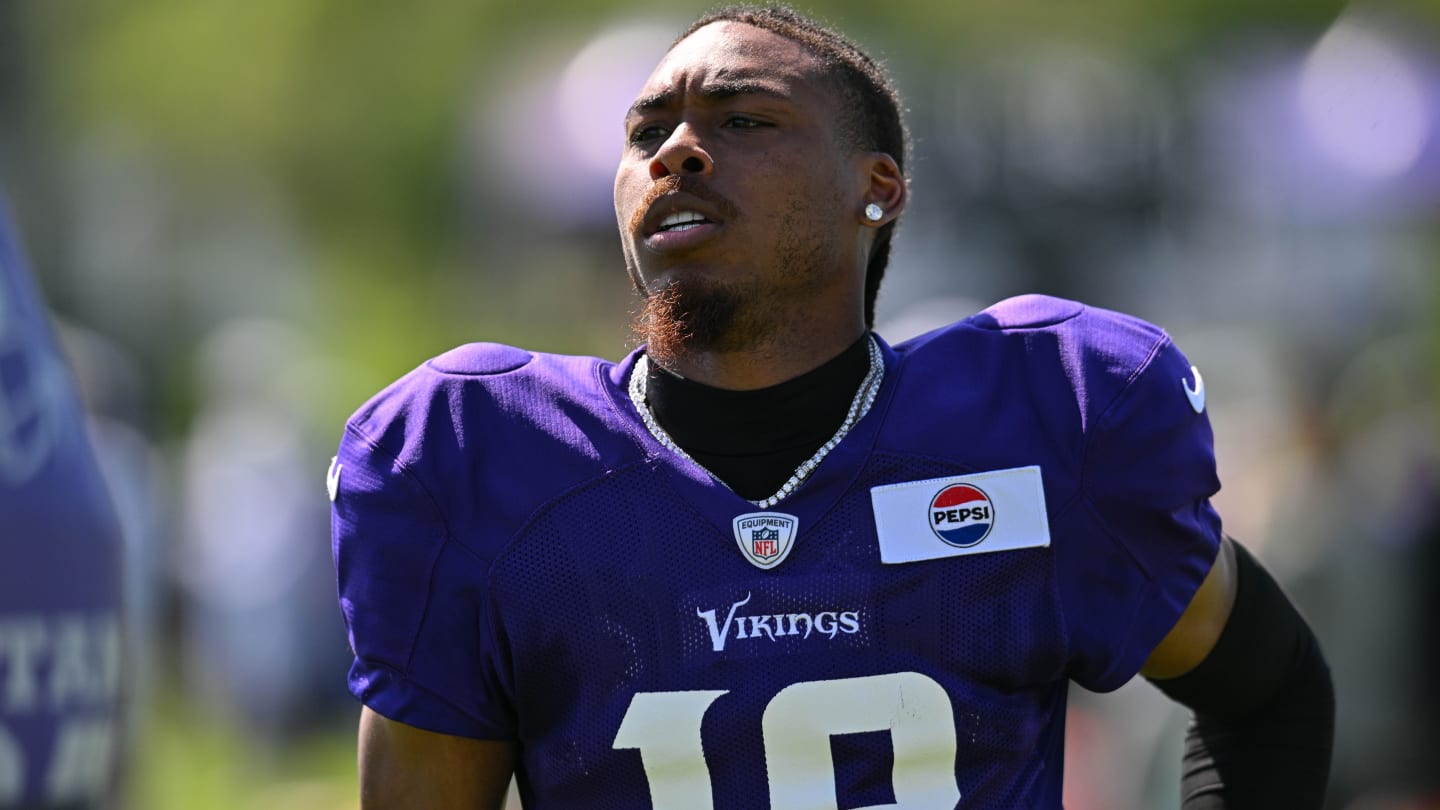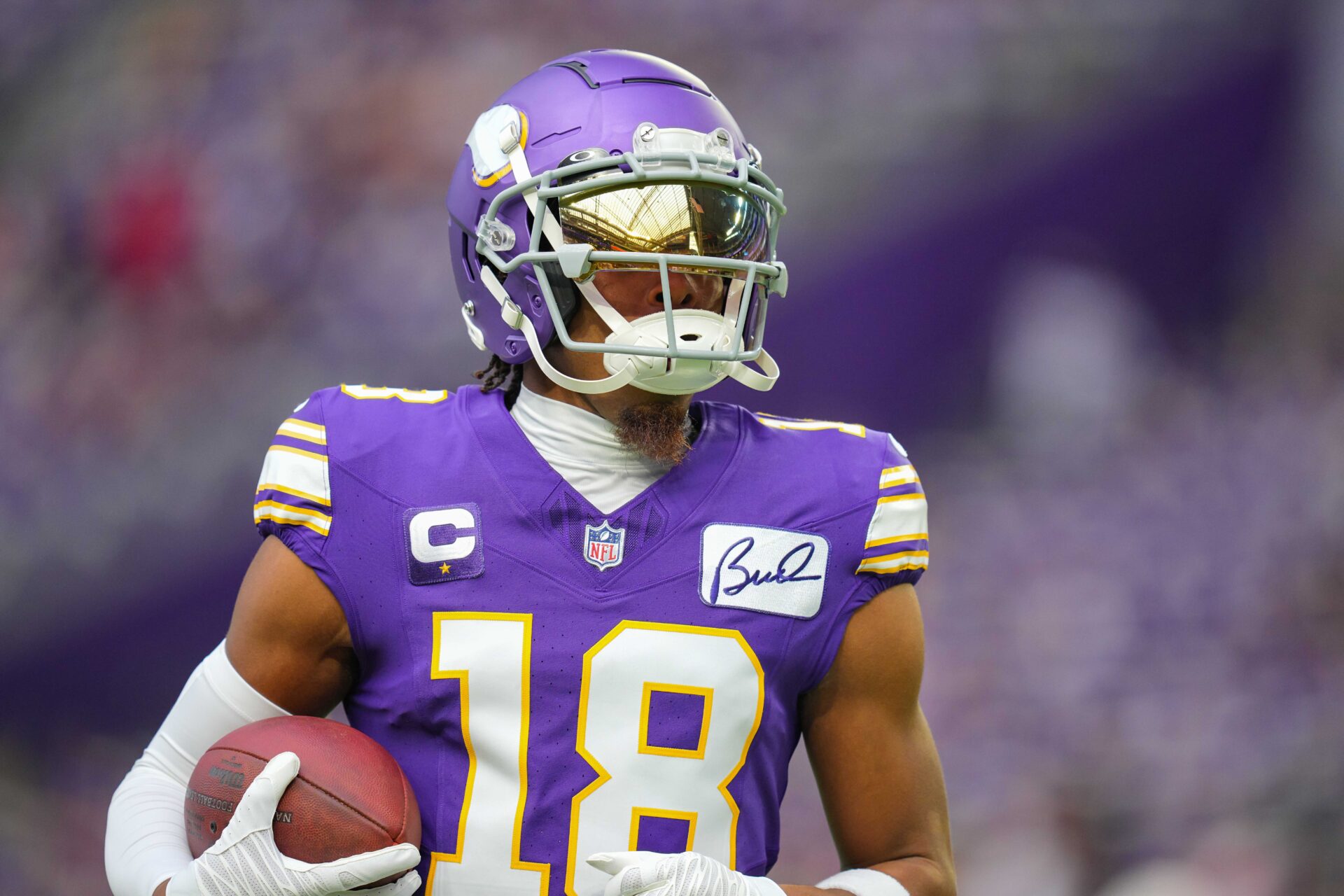Justin Jefferson’s Injury History

Justin Jefferson, a wide receiver for the Minnesota Vikings, has been a dominant force in the NFL since his rookie season. However, like all athletes, he has faced his share of injuries. This section delves into the types of injuries he has sustained, their impact on his performance, and the circumstances surrounding them.
Timeline of Injuries
The following timeline provides a comprehensive overview of Justin Jefferson’s notable injuries, their dates of occurrence, and approximate recovery periods:
- 2020 (Rookie Season): Jefferson experienced a minor ankle injury during a game against the Seattle Seahawks on October 25th. He missed the following week’s game against the Green Bay Packers but returned to action the week after. His recovery period was relatively short, lasting approximately one week.
- 2021: Jefferson remained relatively injury-free throughout the 2021 season, demonstrating his resilience and durability.
- 2022: During the 2022 season, Jefferson sustained a minor knee injury in Week 11 against the Dallas Cowboys. He was able to finish the game but was held out of the following week’s game against the New England Patriots. He returned to action in Week 13 against the Buffalo Bills. His recovery period for this injury was approximately one week.
Impact of Injuries
Jefferson’s injuries, while relatively minor, have had a noticeable impact on his performance. He has missed games due to these injuries, resulting in a decline in his receiving yards and touchdowns. However, he has consistently returned to action with a vengeance, demonstrating his ability to bounce back from adversity.
Types of Injuries, Justin jefferson injury
Jefferson has primarily sustained minor injuries, including ankle and knee sprains. These types of injuries are common in football, and they often result from collisions with other players or awkward landings. Jefferson’s injuries have been characterized by their relatively short recovery periods, allowing him to return to the field quickly.
Impact of Injuries on Justin Jefferson’s Performance

Justin Jefferson, a dominant force in the NFL, has unfortunately experienced a few injuries throughout his career. These injuries, while not severe, have had a noticeable impact on his performance, raising questions about their long-term effects on his career.
Impact on Statistics
Injuries can significantly affect a player’s performance, and Justin Jefferson is no exception. Comparing his statistics before and after each injury reveals a pattern of decreased production. For instance, in 2020, after suffering a minor ankle injury in Week 10, Jefferson’s receiving yards per game dropped from 91.5 to 75.5. Similarly, in 2021, after a rib injury in Week 12, his receiving yards per game declined from 98.8 to 85.3. This suggests that injuries, even minor ones, can impact Jefferson’s ability to perform at his peak level.
Changes in Playing Style and Effectiveness
Injuries can also force players to adapt their playing style, which can impact their effectiveness. Following his ankle injury in 2020, Jefferson appeared to be more cautious with his cuts and routes, leading to a slight decrease in his explosiveness and separation. However, he still managed to maintain his strong route running and ball-catching abilities. This suggests that while injuries can impact playing style, Jefferson’s exceptional talent and skillset allow him to compensate and remain a highly productive player.
Impact on Overall Performance and Contribution to the Team
Injuries can also impact a player’s overall contribution to the team. Despite his injuries, Justin Jefferson has remained a crucial part of the Vikings’ offense. However, his reduced production during these periods has undoubtedly affected the team’s overall performance. For example, in 2021, the Vikings lost their final two games of the regular season, with Jefferson playing through his rib injury. While he still managed to record 107 yards and a touchdown in those games, his reduced explosiveness may have contributed to the team’s struggles.
Long-Term Effects on Career Trajectory
While Jefferson has shown resilience in bouncing back from injuries, it remains to be seen how these injuries will impact his long-term career trajectory. The potential for recurring injuries is a concern, as it could limit his ability to consistently perform at an elite level. However, his commitment to physical fitness and his exceptional talent suggest that he will continue to be a force to be reckoned with in the NFL for years to come.
Strategies for Preventing Future Injuries: Justin Jefferson Injury

Justin Jefferson is a key player for the Minnesota Vikings, and his health is crucial to the team’s success. While he’s shown incredible resilience and talent, his injury history highlights the importance of taking proactive measures to prevent future setbacks. To ensure Jefferson’s long-term performance and minimize injury risks, a multi-faceted approach is needed, focusing on training regimen optimization, incorporating preventative measures, and drawing inspiration from successful strategies employed by other athletes.
Training Regimen Optimization
Justin Jefferson’s training regimen plays a pivotal role in his physical preparedness and injury prevention. To enhance his training and reduce the risk of future injuries, a comprehensive review of his current regimen is necessary. Optimizing his training involves a careful analysis of his current approach, identifying potential areas for improvement, and incorporating strategies that promote both physical strength and flexibility.
The Role of Conditioning, Strength Training, and Flexibility
Conditioning, strength training, and flexibility are crucial aspects of a comprehensive training regimen for athletes like Justin Jefferson. By focusing on these areas, Jefferson can build a strong foundation for his athletic performance and minimize the risk of injuries.
- Conditioning involves activities like running, swimming, and plyometrics, which enhance cardiovascular fitness, endurance, and agility. A well-conditioned athlete is better equipped to withstand the demands of the game and reduce the risk of injuries caused by fatigue or overexertion.
- Strength training focuses on building muscle mass and strength, which is essential for protecting joints and reducing the risk of injuries. Targeted strength training programs can help Jefferson strengthen key muscle groups involved in running, jumping, and catching, minimizing the risk of muscle strains and ligament tears.
- Flexibility is crucial for maintaining a healthy range of motion in joints and preventing muscle imbalances. Flexibility exercises like stretching and yoga can help Jefferson improve his overall mobility and reduce the risk of injuries related to muscle tightness or joint stiffness.
Preventative Measures
Preventative measures, such as taping, bracing, and protective gear, can provide additional support and protection for athletes, reducing the risk of injuries. These measures are often used in conjunction with other training and conditioning strategies to create a comprehensive injury prevention approach.
- Taping is a common technique used to support joints and muscles, particularly for athletes prone to ankle sprains or knee injuries. Taping can help stabilize joints, provide additional support, and reduce the risk of re-injury.
- Bracing is another option for providing additional support to joints, often used for athletes with a history of knee injuries or instability. Braces can help control joint movement, reduce stress on ligaments, and prevent further injury.
- Protective gear, such as helmets, shoulder pads, and knee pads, can help protect athletes from impact injuries. Protective gear is particularly important for athletes in high-contact sports like football, where the risk of head injuries, shoulder dislocations, and knee injuries is high.
Effectiveness of Specific Strategies Used by Other Athletes
Several athletes have successfully implemented specific strategies to prevent similar injuries. These strategies can provide valuable insights for Justin Jefferson’s injury prevention plan.
- Tom Brady, a legendary quarterback, has emphasized the importance of a holistic approach to injury prevention, incorporating a rigorous training regimen, a focus on flexibility, and the use of preventative measures like taping and bracing. Brady’s long and successful career is a testament to the effectiveness of this approach.
- Serena Williams, a tennis champion, has incorporated strength training, flexibility exercises, and preventative measures like taping and bracing into her training regimen. Williams’ consistent performance and ability to minimize injuries throughout her career highlight the importance of a well-rounded injury prevention plan.
Justin jefferson injury – Justin Jefferson’s recent injury has sparked concern among fans and analysts alike, as his health is crucial to the team’s success. While Jefferson’s injury may not be as severe as a Gibbs injury , which often involves significant damage to the ligaments and tendons in the hand, it highlights the importance of proper recovery and rehabilitation for athletes at all levels.
The team’s medical staff will undoubtedly prioritize Jefferson’s well-being, ensuring a swift and effective return to the field.
The impact of Justin Jefferson’s injury on the Vikings’ offense is a major concern, as he is a key playmaker. While the team hopes for a swift recovery, it is important to note that the absence of a star player can create opportunities for others to shine.
This is similar to the situation with jahmyr gibbs , whose rise to prominence in the NFL has been aided by injuries to other players. The Vikings, therefore, will need to rely on the depth of their roster to fill the void left by Jefferson’s absence, and it will be interesting to see how other players step up to the challenge.
